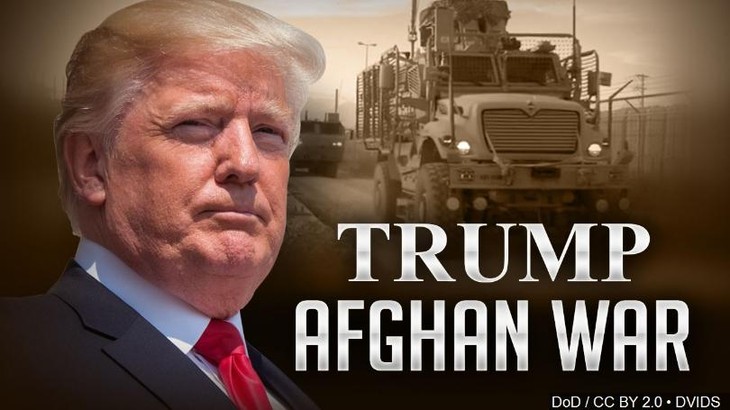US new security strategy in Afghanistan
VOV -
(VOVWORLD) - US President Donald Trump last week announced his strategy on Afghanistan focusing on countering terrorism and supporting the Afghan government and its people to shape their future. The strategy’s goals are clear but its effectiveness is not as efforts to end the 16-year conflict in Afghanistan and realize other US goals in South Asia have been ineffective.
 Photo: wctv.tv Photo: wctv.tv
|
Announcing the new security strategy, President Trump said he had studied thoroughly all aspects of Afghanistan. The US forces there will win and prevent Islamic gunmen from turning the country into a safe heaven.
Trump’s irresistible option
It is Trump’s reluctant option to implement military intervention in Afghanistan. Since his presidential campaign, Trump never wanted the US to be further bogged down in Afghanistan. He said he wanted to withdraw US troops because the country had spent too much on “unnecessary wars”. It has been 16 years since President George W. Bush launched the war on terror to wipe out Al Qeada. But the conflict in Afghanistan has not ended. The US has spent hundreds of billions of USD and lost 2,400 American troops on the battlefield.
But Trump was persuaded by national security advisors on the US’s capability of wiping out the Taliban. He is aware of the security threat that the US is facing in Afghanistan and the wider region. Moreover, abandoning Afghanistan means that the US has accepted failure and will face terrorist and extremist threats in the long term. Now that the Taliban is re-emerging strongly. It has occupied several regions in Afghanistan and conducted frequent attacks against government troops. The Afghan military backed by the US has so far gained control of around 60% of the 407 districts nationwide. After being attacked in Iraq and Syria, ISIS are seeking new hideouts in Afghanistan.
Public’s skepticism
Though President Trump said the new strategy contains drastic changes, it’s not much different from the strategies of his predecessors Barack Obama and George W. Bush. Supporters of Trump’s strategy are worried that the US might be bogged down as the victory is not guaranteed. Trump said the US will win but didn’t mention how. Will the Taliban, Al-Qeada and ISIS surrender or will the Taliban be given a role in an Afghan government under certain conditions? Mr. Trump didn’t set a deadline for the war-torn region but failed to explain the reason for deploying additional thousands of troops. He didn’t explain why these troops can do what 100,000 troops in Afghanistan in 2010 and 2011 couldn’t. Deploying more troops is likely to worsen the situation in a country which is ravaged by conflicts between Pashtun and other ethnic tribes, Durrani and Ghilzai tribes, between progressive urban people and religious conservatives, between India and Pakistan, and even between the Taliban in Pakistan and Afghanistan. Trump said he wants to use all available tools to achieve his goals. But his proposed fiscal budget for 2018 that will cut budget for the State Department and the US Agency for International Development is likely to make his strategy infeasible.
Former US Presidents George W. Bush and Barack Obama carried out various approaches to end the conflict in Afghanistan but the results were modest. In an assessment announced in May, the US Central Intelligence Agency predicted that the situation in Afghanistan would become worse in the coming years despite the deployment of additional troops by the US and its allies. Afghanistan in the mearn time will continue to be a headache for the US administration.
VOV